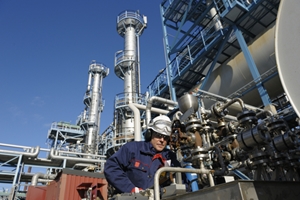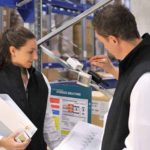The average person may not notice it, but industrial gas is a much larger part of the Australian economy than he or she would think.
As one can imagine, commercial flue equipment needs to be approved for use, obligating technicians to assess gas appliances with emissions analysers. These inspections are far from cursory – Australian authorities require these machines to pass a stringent set of safety requirements before they can be implemented.
In this post, we’ll review some of the most important standards gas appliance commissioners will need to know when assessing them.
Calciners, bake ovens and incinerators are categorised as Type B gas appliances.
Defining a Type B gas appliance
First, it’s important to make a clear distinction between Type A and Type B gas appliances. Australian Gas Networks defines Type A machines as light commercial and domestic items such as space heaters, cookers, catering equipment, water heaters and outdoor grills. These products receive approval badges from the Australian Gas Association.
Type B gas appliances, as identified by the Western Australia Department of Commerce, are any machines that support commercial or industrial operations. Calciners, bake ovens, incinerators, dry-out burners, hot-water boilers and process kilns are all categorised as Type B gas appliances. The state further specified that a Type B appliance has a maximum hourly input rate that exceeds 10 megajoules.
Not every emissions tester is suited for Type B appliances. While industrial flue gas analysers will certainly get the job done, there are other products that are best suited for analysing catering equipment and restaurant cookers, for example.
Navigating legislation
The Gas Act 1997’s Gas Regulations 2012 expansion included a number of requirements for those manufacturing, installing and approving Type B equipment. In regard to commissioning, Division 3 of Part 9 repeatedly cited Australian Standard 3814 (AS 3814).
The purpose of AS 3814, which was implemented by the Standards Australia Committee, is to define systematic, minimum requirements for the secure operation of industrial gas application. Specifically, standard details how professionals can:
- Prevent fire hazards, explosions and other such accidents associated with fuel-based processes
- Preclude injury to individuals or assets
- Implement safe practices into a consistent regimen
The video below details the processes associated with explosion relief:
For example, one provision states that when commissioning an appliance, the inspector is required to ensure that several items are installed and operate normally. All controls, interlocks, limit devices, flame safeguard components and safety shut-off systems must be accounted for and approved.
At the same time, not every appliance is designed the same. Therefore, each machine must abide by its own set of rules. For example, on all incinerators and cremators with both primary and secondary burners, the primary burner must be interlocked to prohibit ignition and operation unless the secondary burner is on. Either that, or the secondary combustion chamber must have reached a temperature of 750 degrees Celsius.
A closer look at the commissioner’s role
Tec-NQ is running Certificate IV in Install, Commission and Maintain Type B Gas Appliances on May 3rd. Call 1300 665 733 to book your spot!
— Tec-NQ (@Tec_NQ) April 15, 2011
Although Western Australia doesn’t delve into what sort of carbon monoxide instruments commissioners need, the state did outline these professionals’ responsibilities. For the record, the commissioner can be the same person who actually installed the appliance or another individual who has received accreditation as an industrial gas equipment commissioner.
In addition to verifying that the appliance in question has all the necessary safety mechanisms, the commissioner must request gas from firm supplying the resource. This is to gauge how the appliance functions over a certain period of time (under normal circumstances, 28 days).
Once the inspection is complete, the gas commission sends a notice of completion within 48 hours of the assessment to the gas supplier and the party that applied for approval.
Without these standards, industrial gas application manufacturers and users wouldn’t have a clear point of reference to deduce what is safe and what isn’t. Thanks to the highly accurate, digital gas analysers on the market, technicians throughout Australia can accurately deduce just how secure these are.









 Reduce cooking oil costs while ensuring quality
Reduce cooking oil costs while ensuring quality Expert knowledge on CO2 monitoring
Expert knowledge on CO2 monitoring Refrigeration knowledge - in 3 modules
Refrigeration knowledge - in 3 modules



